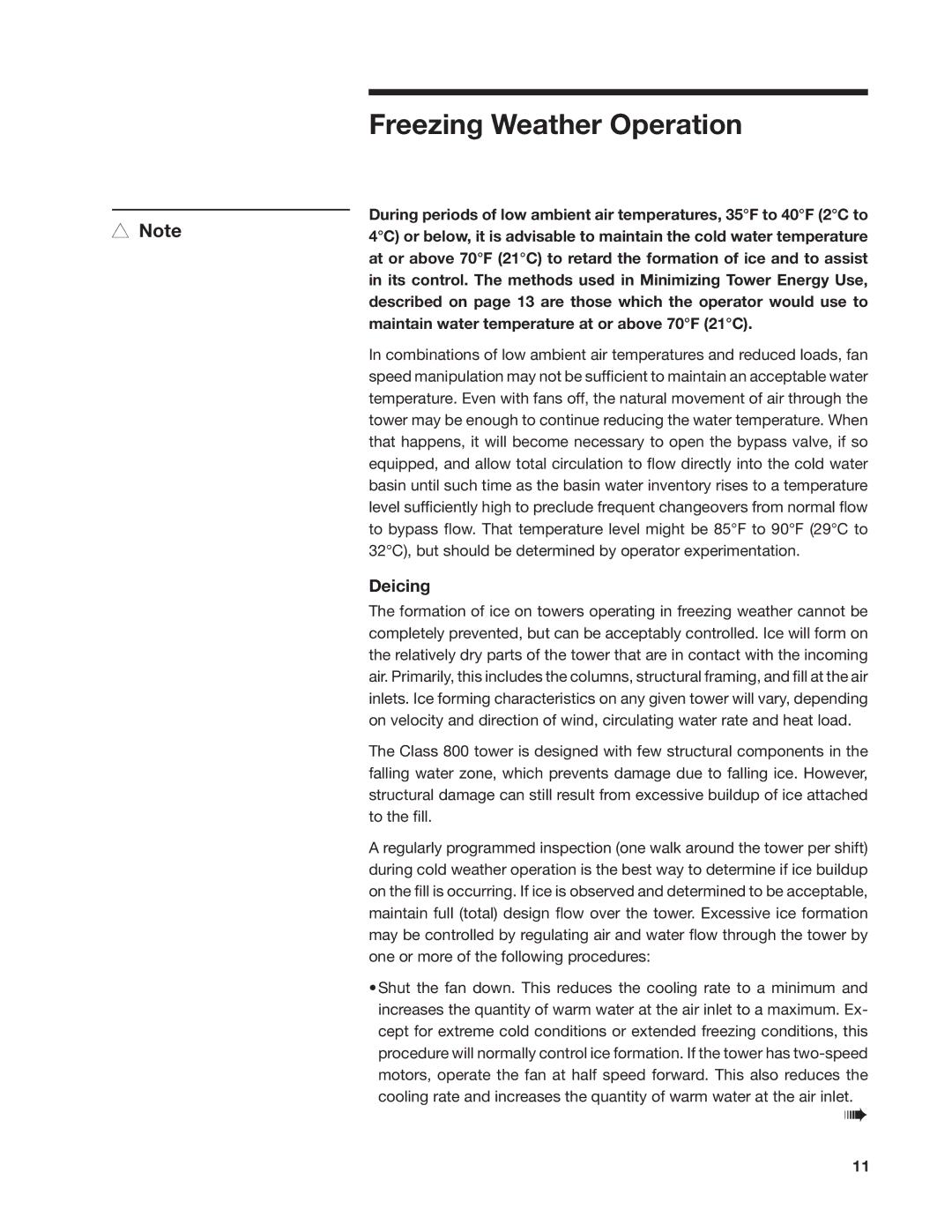800 specifications
SPX Cooling Technologies 800 is a highly advanced cooling tower designed for commercial and industrial applications. This state-of-the-art equipment is recognized for its efficiency, reliability, and robust construction. The 800 model is engineered to meet the demanding needs of modern cooling processes, ensuring optimal performance in various settings.One of the main features of the SPX Cooling Technologies 800 is its innovative design which contributes to superior heat transfer capabilities. The large surface area of the cooling fill maximizes the interaction between air and water, enhancing cooling efficiency while reducing operational costs. This design also supports effective thermal performance with lower water consumption, making it an environmentally friendly option for businesses.
The unit's fan technology is another standout characteristic. The SPX Cooling Technologies 800 employs low-noise, high-efficiency axial fans that optimize airflow while minimizing sound levels. This consideration for noise reduction makes it ideal for installation in noise-sensitive environments without compromising on performance.
Moreover, the 800 model incorporates a corrosion-resistant casing, fabricated from high-quality materials like fiberglass-reinforced plastic. This durability ensures a long service life and reduces the need for frequent maintenance, which in turn lowers operating costs. The design also allows for easy access to internal components, streamlining servicing and inspection processes.
SPX Cooling Technologies has also integrated advanced automation features into the 800 unit. With intelligent control systems, operators can easily monitor and adjust performance parameters remotely. This capability enhances operational efficiency and allows for predictive maintenance, ultimately extending the equipment's lifespan.
This model is suitable for a variety of applications, including industrial manufacturing, commercial HVAC systems, and process cooling. The flexible design options and customizable configurations allow it to meet specific site requirements, ensuring compatibility with existing infrastructure.
In summary, the SPX Cooling Technologies 800 stands out in the market for its combination of high performance, durability, and efficiency. With features such as advanced fan technology, corrosion-resistant materials, and intelligent automation, it offers a comprehensive solution for modern cooling needs, catering to a diverse range of industries while promoting sustainability and cost-effectiveness.

